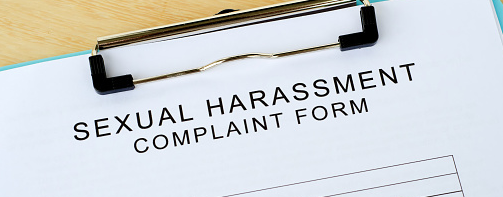You have /5 articles left.
Sign up for a free account or log in.

Getty Images
Academe’s Me Too movement has thus far focused on professors harassing students, or senior professors harassing junior professors. And that makes sense, given the obvious power differential between those groups: in many cases, students depend on faculty members for not only grades but mentorship, recommendations and professional opportunities. Much the same can be said for the dynamic between junior and senior faculty members. Yet a recent case highlights the fact that professors, too, may be vulnerable to abuse by students.
Last week, a judge issued a temporary restraining order against a student at Florida SouthWestern State College accused of harassing and stalking a faculty member. The history instructor, Matthew Vivyan, asked the court for the order after his college issued the student a no-contact order, which she allegedly violated multiple times via email.
According to Vivyan’s petition to the court, Sofia Diaz was a student of his in the fall. Starting in January, he says, “she began making inappropriate comments to me when she would stop by my office,” sometimes with “sexual overtones.” Diaz allegedly began sending Vivyan emails about her clairvoyant visions, some of which were threatening or hostile, such as “The rest of your life awaits you. I’m waiting, idiot.” Vivyan says other emails referred to his personal life, one of which mentioned his sister by name but confused her with someone Diaz believed to be his ex-girlfriend. Another said he has a baby with a woman and demanded that he take a paternity test, but Vivyan says that relationship is imagined. Yet another emailed accused Vivyan’s parents of abusing him.
“Diaz has made my life miserable,” the petition says. “I am fearful for my safety, I dread opening my emails and I fear my professional future due to her threats.”
Vivyan did not immediately respond to a request for comment. Diaz told the local News-Press, which has been covering the case, that she hadn’t “been convicted of anything, and I already have people looking at me different.”
The allegations are “affecting my job,” she added. “It's really sad how people will believe things, and they don't even know if they are true or not.”
Florida SouthWestern State issued Diaz a trespass warning last week, according to the News-Press. Vivyan’s petition says that Diaz is suspended, but the college did not confirm that.
Elusive Data
Statistically speaking, the most common kind of sexual misconduct on college and university campuses is student-on-student harassment or assault. And again, students are more vulnerable to abuse from professors than professors are to abuse from students. But student-on-faculty harassment -- what’s known as academic contra-power harassment -- exists.
There is relatively little recent research on the topic, at least as compared to quid pro quo harassment in academe, in which someone with institutionally conferred power hints at or demands sexual favors in exchange for professional ones. But a 2012 study of 524 professors in the NASPA Journal About Women in Higher Education found that 91 percent reported at least one act of student incivility or bullying and 25 percent experienced at least one “sexual behavior” from a student. Women, racial minorities, younger faculty members and those with less experience and credentials reported more such instances, and more women than men reported a “serious incident” of student incivility, bullying, aggression or sexual attention during their careers.
A related 2016 study found that female professors reported significantly more negative outcomes as a result of contra-power harassment, such as anxiety, stress-related illness, difficulty concentrating or wanting to quit, than their male peers. Male professors were more likely to highlight experiences with sexual harassment in particular than were women, who recalled more disrespectful or disruptive student behaviors.
Claudia Lampman, interim vice provost for student success and a professor of psychology at the University of Alaska at Anchorage, wrote the 2012 study and co-wrote the 2016 one. She said via email that there are “many different types of power” and that contra-power harassment sometimes stems from sociocultural imbalances. So women and minority professors “are more likely to be threatened and challenged by students -- usually white males,” she said.
“When men faculty are sexually harassed, it usually takes the form of a request -- an exchange of sex for grades, for example. In this case, the student doing it is using their sexual capital,” she added. So it’s not about power as much as it is about “desperation.”
Brett Sokolow, executive director of the Association of Title IX Administrators, said that allegations from faculty members of sexual harassment by students have “ticked up,” of late, “given the overall sensitivities to misconduct within academia.” But they remain rare, he said, making up approximately 2 percent of the harassment allegations his organization sees.
Beyond it being relatively unusual, Sokolow said that many faculty members also still hesitate to report contra-power harassment, out of concern that doing so will “make them look like ineffective classroom managers.” But an increasing number of male professors are coming forward to pre-emptively report “awkward” interactions with students, he said, “or making sure we are aware of sexual come-ons from students, and that they turned the student down.”
Sokolow said these faculty members may be fearful that a “refusal” will be turned against them, and so wish to go on record with their institutions’ Title IX offices.
William Kidder, interim associate vice president for Title IX and strategic initiatives at Sonoma State University, has studied harassment in academe. His research has focused on faculty or administrators harassing students, as the disparity in power “accentuates the risks and vulnerabilities around sexual harassment,” he said. Yet he’s seen contra-power harassment multiple times over his career as an administrator, against teaching assistants as well as professors.
Student Accountability
As for consequences, Kidder said that most public and private institutions will hold students accountable for contra-power harassment, since student codes generally cover misconduct directed at anyone affiliated with the college or university.
Enforcement of such codes can be difficult where student-on-faculty harassment involves anonymity, however, he said -- such as when students write inappropriate or harassing comments in their evaluations of professors’ teaching. When that happens, junior and midcareer female professors are disproportionately targeted, Kidder said, echoing other research on biases in student evaluations (though he noted male professors are targeted in this way, too).
Sokolow said that students “may wield some power” in some instances, but not the institutional power “at the heart” of a quid pro quo claim. So faculty reports of harassment by students much more typically get classified as hostile environment claims.
Title IX coordinators take such claims as seriously as they would student-on-student claims, Sokolow said. And frequently, the same standards, policies and procedures will apply to “any harassment by a student, regardless of whether they have targeted another student, faculty member or other employee.”
Hans-Joerg Tiede, associate secretary for academic freedom, tenure and governance at the American Association of University Professors, said his organization can aid professors harassed by students, but that it isn’t often asked to do so.
As for whether the same standards of conduct that apply to professors should apply to students, Tiede said yes -- generally. Sexual harassment “should not be tolerated by members of either group,” he said, and both accused professors and students should receive appropriate due process following a complaint.
Not all complaints get the same kind of institutional attention, however. Last year, for example, an adjunct at a public university wrote anonymously for Inside Higher Ed’s “Conditionally Accepted” blog, recounting being harassed by a male student at a former campus.
“At one point, he locked me in my own office and tried to proposition me,” the adjunct wrote. “In the aftermath, I experienced firsthand how little the administration at my institution seemed to know about sexual assault and harassment, as well as how few concrete procedures were in place to help me and others in my position to deal with being assaulted or harassed.”
Advice From a Fellow Professor
The institution's webpage had little information on what to do, the adjunct wrote, and “when I reached out to my colleagues in the administration and on the faculty, for the most part, they also turned a blind eye to my situation. Meanwhile, the harassment did not stop. I felt alone, scared and unprotected.”
The adjunct didn’t give up, however, and said the institution changed its related polices and procedures as a result. Among other tips, the adjunct advised fellow professors who are harassed by students to search out campus Title IX procedures and to make sure that all communication with the student is in writing via email, to serve as permanent date and time stamps.
“Remember that you do not have to allow yourself to be revictimized. You do not have to continue to sit in meetings telling your story over and over again,” the adjunct wrote. “You do have the right to legal counsel. File a complaint with the federal Equal Employment Opportunity Commission office in your state if you feel your case has not been handled appropriately by your employer.”
Lampman said campuses should aim to build cultures of respect, in which students are told there doesn't have to be "a power differential for sexual harassment to occur. It is not ok even if your professor ostensibly has more power."









